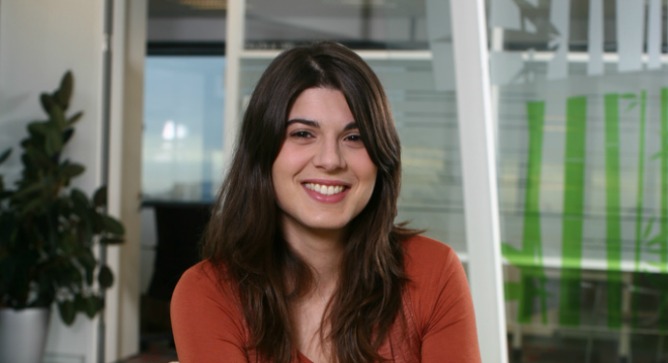Kira Radinsky was having a good day. As she sat down to discuss the new software she and Microsoft Research have developed for “disaster prediction,” something more pressing was on her mind that she just had to share.
Less than 24 hours earlier, Radinsky had received her PhD from the Technion-Israel Institute of Technology in computer science. The doctorate was the culmination of an intense education at Israel’s top tech school that Radinsky began when she was just 15 and has continued over 11 years, with only short breaks to serve in the army’s Intelligence Corps and an internship at Microsoft in Redmond, California.
Spread the Word
• Email this article to friends or colleagues
• Share this article on Facebook or Twitter
• Write about and link to this article on your blog
• Local relevancy? Send this article to your local press
It was at Microsoft’s US headquarters that Radinsky, now 26, met Eric Horvitz, head of Microsoft Research. He suggested they work together on a data-mining project that’s been grabbing headlines. The duo’s software can predict disasters of many types, including disease outbreaks, violence and natural catastrophes.
The most dramatic example: When tested on historical data from 2006, the software correctly predicted a cholera outbreak in Angola. When the same success happened in relation to a Cuban epidemic, the software attracted the interest of Johns Hopkins University, which is now looking into deploying the software to forecast where scarce medications will be most in demand in the developing world.
The software works by culling through digitized newspaper clippings and other online sources and looking for correlations. In the cholera example, outbreaks of the disease around the world tended to be preceded by reports of drought in the news. Radinsky has also looked at the connection between earthquakes and tsunamis, and hurricanes and gas prices. The results have an accuracy rate of 70-90 percent.
Trolling for data
Radinsky and Horvitz developed algorithms that can be fed by virtually any data source, but for their work so far, they’ve used 22 years’ worth of The New York Times. However, The Times did not report on events leading to the cholera outbreak in Cuba. Yet the software predicted it anyway: Radinsky used crowd-sourced data from Wikipedia to augment The Times. The software “looked for countries with similar statistics and GDPs, then searched for drought, storm and cholera,” Radinsky explains.
In addition to Wikipedia, the software uses 90 other data sources from the Web, including WordNet, which helps the software understand the meaning of words, and OpenCyc, a “general knowledge base and commonsense reasoning engine.”
The software delivers results within a few seconds and assigns a number from 0 to 100 indicating the probability of an event happening tomorrow, Radinsky tells ISRAEL21c.
Radinsky’s is not the only software to make predictions. Commercial companies like Recorded Future are already making smart guesses about future possibilities for customers in financial services and the defense industries. But the Technion-Microsoft solution, currently as pure research, is focused more on humanitarian questions.
That’s built into Radinsky’s DNA. “What gets me most excited are things that will change the world,” she says. “Especially in an area where people say it just won’t work!”
Sales intelligence
That’s not to say Radinsky isn’t interested in making a living.
On the contrary, while it might seem that she’s newly thrust into the job market with her fresh doctorate, she’s actually already a year into a startup of her own called SalesPredict, which applies the same forecasting skill sets to predict sales, but with different algorithms (the Technion owns the intellectual property on her work with Microsoft).
The aim is better qualified leads and increased revenues for corporations. According to its minimalist website (“We’re still in stealth mode,” Radinsky explains), SalesPredict is building “a cloud-based application that delivers targeted business-to-business sales intelligence to let sales pros focus on closing deals.”
With her experience both in business and academia, Radinsky certainly has the data chops to pull off a project like SalesPredict. But potential customers would be best to avoid Radinsky in a dark alley – her “chops” extend beyond data to karate, in which she has a black belt. It’s an art she’s been practicing since age five. And besting the ambitious Radinsky would probably not be a prediction her own software would rank highly.

















